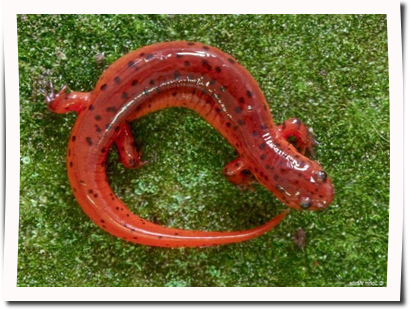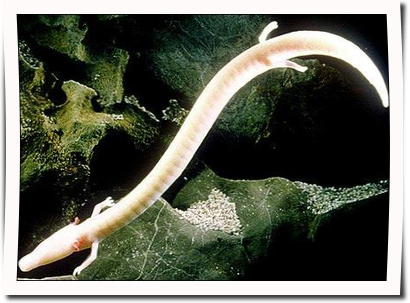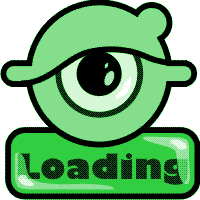What is a heart attack?
More than 1 million Americans have heart attacks each year. A heart attack, or myocardial infarction (MI), is permanent damage to the heart muscle. "Myo" means muscle, "cardial" refers to the heart, and "infarction" means death of tissue due to lack of blood supply.
What Happens During a Heart Attack?
The heart muscle requires a constant supply of oxygen-rich blood to nourish it. The coronary arteries provide the heart with this critical blood supply. If you have coronary artery disease, those arteries become narrow and blood cannot flow as well as they should. Fatty matter, calcium, proteins, and inflammatory cells build up within the arteries to form plaques of different sizes. The plaque deposits are hard on the outside and soft and mushy on the inside. When the plaque is hard, the outer shell cracks (plaque rupture), platelets (disc-shaped particles in the blood that aid clotting) come to the area, and blood clots form around the plaque. If a blood clot totally blocks the artery, the heart muscle becomes "starved" for oxygen. Within a short time, death of heart muscle cells occurs, causing permanent damage. This is a heart attack. While it is unusual, a heart attack can also be caused by a spasm of a coronary artery. During a coronary spasm, the coronary arteries restrict or spasm on and off, reducing blood supply to the heart muscle (ischemia). It may occur at rest and can even occur in people without significant coronary artery disease. Each coronary artery supplies blood to a region of heart muscle. The amount of damage to the heart muscle depends on the size of the area supplied by the blocked artery and the time between injury and treatment. Healing of the heart muscle begins soon after a heart attack and takes about eight weeks. Just like a skin wound, the heart's wound heals and a scar will form in the damaged area. But, the new scar tissue does not contract. So, the heart's pumping ability is lessened after a heart attack. The amount of lost pumping ability depends on the size and location of the scar.
Causes and risks
Most heart attacks are caused by a blood clot that blocks one of the coronary arteries. The coronary arteries bring blood and oxygen to the heart. If the blood flow is blocked, the heart starves for oxygen and heart cells die.
A clot most often forms in a coronary artery that has become narrow because of the build-up of a substance called plaque along the artery walls. (See: atherosclerosis) Sometimes, the plaque cracks and triggers a blood clot to form.
Occasionally, sudden overwhelming stress can trigger a heart attack.
Risk factors for heart attack and coronary artery disease include:
- Being a middle-aged male
- Diabetes
- Family history of coronary artery disease (genetic or hereditary factors)
- High blood pressure
- Increasing age (over age 65)
- Smoking
- Too much fat in your diet
- Unhealthy cholesterol levels, especially high LDL ("bad") cholesterol and low HDL ("good") cholesterol
Symptoms
Chest pain is a major symptom of heart attack. You may feel the pain in only one part of your body, or it may move from your chest to your arms, shoulder, neck, teeth, jaw, belly area, or back. The pain can be severe or mild. It can feel like:
- A tight band around the chest
- Bad indigestion
- Something heavy sitting on your chest
- Squeezing or heavy pressure
The pain usually lasts longer than 20 minutes. Rest and a medicine called nitro-glycerine do not completely relieve the pain of a heart attack. Other symptoms of a heart attack include:
- Anxiety
- Cough
- Fainting
- Light-headedness, dizziness
- Nausea or vomiting
- Palpitations (feeling like your heart is beating too fast)
- Shortness of breath
- Sweating, which may be extreme
Some people (the elderly, people with diabetes, and women) may have little or no chest pain. Or, they may experience unusual symptoms (shortness of breath, fatigue, weakness). A "silent heart attack" is a heart attack with no symptoms.
Danger signals
The most typical signal of a coronary thrombosis or MI is severe chest pain, also called angina, because it indicates you that your coronary artery could be blocked.
If it takes less exertion to bring pain you are in danger.
This is because angina usually happens only after some sort of effort.
Pain radiates most often to the left arm, but may also radiate to the lower jaw, neck, right arm, back, and epigastria, where it may mimic heartburn.
The normal chest pain usually is found by putting your fist on your sternum.
And if chest pains last over 20 minutes you should go to the hospital immediately.
What should I do?
- You should go to hospital as quickly as possible.
- Do not drive to hospital by yourself if you are in worse condition.
- Call the ambulance or ask a friend.
- Rest while waiting for the ambulance.
- Chew an aspirin of 300 mg to thin blood.
- If you are waiting for the ambulance ask also your friends to stay with you.
- Try not to get anxious.
But you should also now what you should do if somebody else has a heart attack:
- Give a cardiac massage.
- Call help.
- Provide artificial respiration.
I know that many people aren‘t able to give first aid so remember that you should call help.
Diagnosis
Once the emergency care team arrives, they will ask you about your symptoms and begin to evaluate you. The diagnosis of the heart attack is based on your symptoms, ECG and the results of your blood studies. The goal of treatment is to treat you quickly and limit heart muscle damage.
12-lead ECG
The 12-lead ECG (also known as EKG or electrocardiogram) can help to tell how much damage has happened to your heart muscle and where it has occurred.
In addition, your heart rate and rhythm can be watched. You will also be connected with leads (wires) to a bedside monitor for continuous monitoring of your heart rate and rhythm.
Blood studies
Blood may be drawn to measure levels of biochemical markers. These markers are found inside your body's cells and are needed for their function. When your heart muscle cells are injured, their contents --including the markers -- are released into your bloodstream. By measuring the levels of these markers, the doctor can determine the size of the heart attack and approximately when the heart attack started.
Treatment
Early treatment for a heart attack can prevent or limit damage to the heart muscle. Acting fast, at the first symptoms of a heart attack, can save your life. Medical personnel can begin diagnosis and treatment even before you get to the hospital.
Certain treatments usually are started right away if a heart attack is suspected, even before the diagnosis is confirmed. These include:
- Oxygen therapy
- Aspirin to thin your blood and prevent further blood clotting
- Nitro-glycerine to reduce your heart's workload and improve blood flow through the coronary arteries
- Treatment for chest pain
Once the diagnosis of a heart attack is confirmed or strongly suspected, doctors start treatments to try to promptly restore blood flow to the heart. The two main treatments are "clot-busting" medicines and angioplasty, a procedure used to open blocked coronary arteries.
Medication
Heart Attack Medication for Restoring Blood Flow
After a heart attack medicals have to restore blood flow to the heart to prevent or even limit damage to the heart muscle. The used medicines are called thrombolytic drugs.
These drugs dissolve blood clots that block blood flow to the heart. It has to be given as soon as possible. It’s the most effective one hour after the start of the first heart attack symptoms start. So you can prevent permanent damage to the heart.
Other Heart Attack Medication
Other heart attack medication is used to reduce complications or the chance of another heart attack.
Beta-blockers are very important. They lower your blood pressure, slow down your heart rate and make your heart beat with less force (they decrease workload). Beta-blockers also help to prevent additional heart attacks and some of them can even correct irregular heartbeats.
Angiotensin-converting enzyme inhibitors (ACE inhibitors) prevent strokes, control blood pressure and improve survival after heart attack. It can be mixed with other medicines if someone does not respond sufficiently on them.
If you cannot tolerate ACE inhibitors, or sometimes due to other reasons, you have to use angiotensin II receptor blockers (ARBs). They have the same effects, but they work with another mechanism.
To prevent blood from coagulating, medicals give patients that have had a heart attack anticoagulant. Thrombosis (a formation of a blood clot) really can damage you heart and blood vessels.
antiplatelet drugs are drugs that reduce the risk of clots forming in your blood. An example of these drugs is aspirin, which is well known all over the world. Also low doses daily have success.
Most of the times you have to use arrhythmiatic drugs do correct irregular heartbeat. This medications work by suppressing the abnormal firing of peacemaker tissue or depress the transmission of impulses.
Examinations
After someone has had a heart attack, there may remains damage to the body. Nowadays you can expect better outcomes, because medical accommodation has improved much.
But if the lack of oxygen is too big, you can have damage to the heart damage.
|





















Categoria:
health and deseases